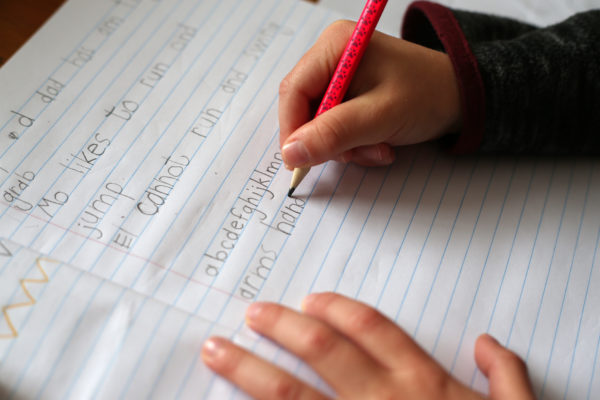How to help your son with his handwriting
This year has been like none before.

The pandemic has changed much of what we know and previously taken for granted. There have been many difficulties, but also some real positives.
Parents have experienced the challenge of supervising their boys’ remote learning from home, as well as the triumphs and difficulties that come with it.
But what has been missed during this time? What effect has online learning had, and what should we be thinking about now?
One of the more important things, particularly for primary school aged boys (and one that is often overlooked), is handwriting.
Handwriting is a complex skill that is developed and refined over time; it requires an integration of perceptual motor skills and higher-level cognitive skills. It is an important skill that has strong links to memory and broader educational development.
What the research says
A study at the Murdoch University and University of Canberra (involving 154 students. 24 teachers and 7 schools in Perth), looked at the influence of handwriting and found that handwriting fluency could be used to predict writing quality and reading skills a year later.
Their evidence demonstrated the cognitive benefits of handwriting in early childhood, including brain development, working memory, translation of thought-to-script abilities and overall writing quality.
They found that poor handwriting hinders vocabulary selection, ideation, revision, and in turn, motivation and overall academic success.
What you can do as parents
We need to help our sons learn and develop fluency in their handwriting in order to concentrate on what they are writing, rather than the act of writing itself.
Here are some tips on things you can do at home to help your son.
Personal connection
Keeping the connection personal will help your son engage with his writing. Starting with simple things like writing out his own or family members’ names for younger boys, to then writing notes to each other (perhaps even mailing the notes to close family and friends in a pen-pal arrangement) will aid the process.
Try to incorporate some writing practice into regular or routine family activities. Doing so will help your son to feel more involved, and make his practice feel less like ‘work’. For example his could write a birthday card for family or friends, fill in a form or jot down family members’ choices before ordering some take-away.
Focus on shapes and movements
For our younger writers, focus on the movement used to create letters. It is as important to know how letters are formed as what they look like – correcting a bad habit (such as starting the letter from the bottom instead of the top) is much harder to do later on, and could affect your son’s ability to write fluidly and join his letters. Demonstrate the direction the pencil moves to make a letter may seem simple, but will have a big impact.
Little by little, but often
Our sons are often unwilling to sit down for extended periods. So practising writing in short intervals several times a day, rather than in a single block of time, is more effective. Asking your son to help you write a quick shopping list or address a letter are some good examples.
Experiment and have fun
Let your son have some fun with his writing practice. Using coloured pens, chalk, highlighters and paint will help encourage him to engage in the process. One trick is to get your son to write an ‘invisible’ message in white crayon on white paper. Painting over the area with watercolour paint will reveal the message.
Games with short blasts of writing are often effective such as, how many times can you write a certain letter/word in 30 seconds? Allocate bonus points for proper shape, form and neatness.
Remember to always praise your son’s efforts (rather than the outcome) and be specific. Constructive feedback such as, “your ‘s’ is looking very neat – I can see you’ve been practising your loops and turns and keeping the letters all the same height”) is much more constructive and useful for him.
Finally, don’t forget to show interest in the content of his writing and display some of his work as a sign of appreciation.
Brought to you by Brighton Grammar School
Kate Casey is a former lawyer and now the Manager of the Crowther Centre at Brighton Grammar, an all-boys school in Melbourne. Kate is a mother of one child, a daughter. This article is about EducationYOU MAY ALSO ENJOY
Subscribe to Understanding Boys. It’s free!
Got boys? Sign up for tips and advice you'll actually use.


